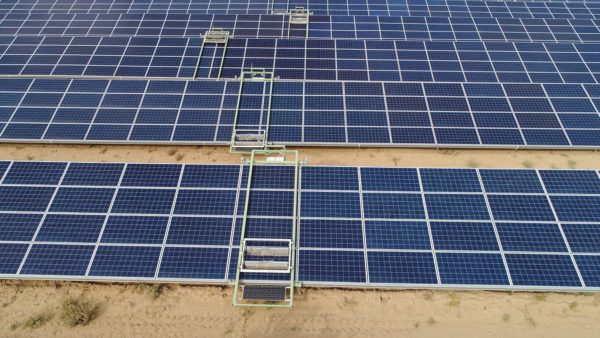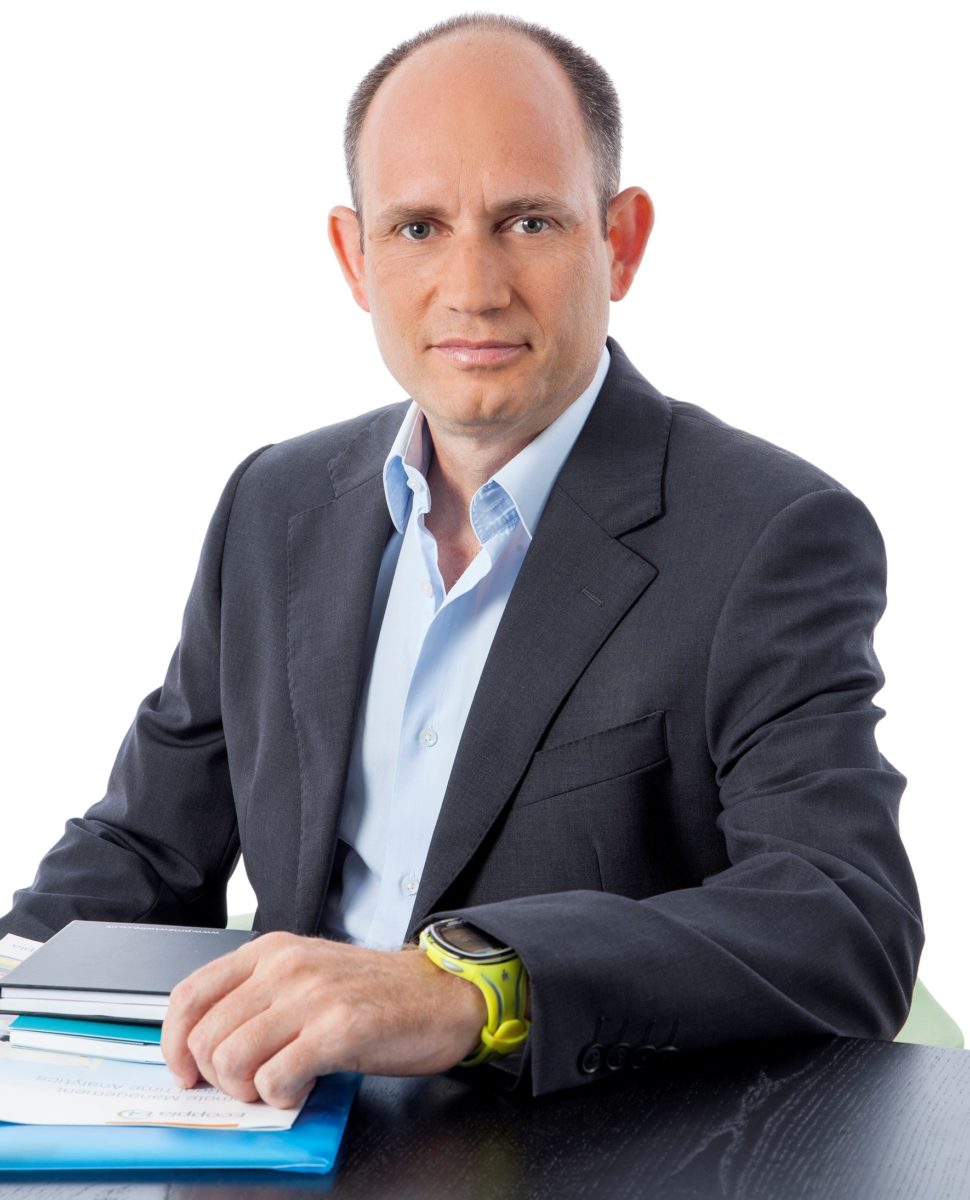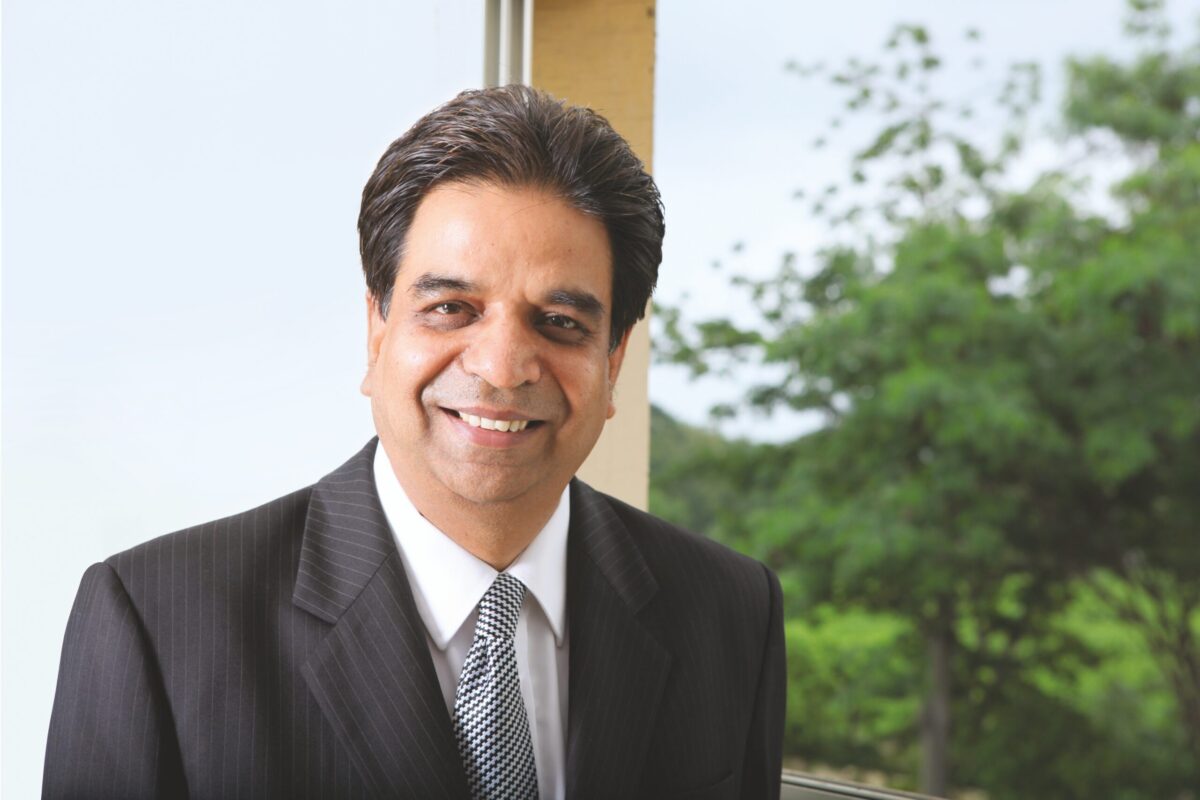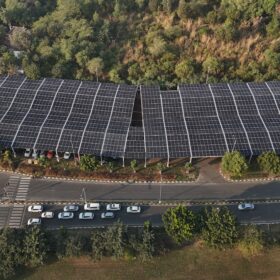pv magazine: Can you explain how the E4 PV module cleaning system works?
Eran Meller: The water-free cleaning process is a combination of: utilizing a special microfiber, which is both very gentle on the panels and effective at catching even the tiniest dust particles; controlled air flow generated by the rotation of the microfiber fin; and using the natural sloe of the array pushing the particles down and off the panels to the ground. Performing this cleaning daily, ensures dirt does not accumulate on the panels, meaning the cleaning operation is effective and efficient without the use of water.
How efficient is this system compared to other, water-based systems?
To compare the two systems, several solar system sites were divided into two clusters by the developers: One, where Ecoppia cleaned 90% of the site daily; and two, where the remaining 10% was cleaned with water, periodically (depending on geography, soiling, local water and labor costs, and cleaning frequency, which may vary from once a week, to once a month). During this test, Ecoppia clearly demonstrated an annual production increase of 2.5-5%, while also reducing Operations and Maintenance (O&M) costs, because the system required no water, no labor and no electricity.
Critically, the dust storms hitting a solar site can reduce efficiency up to 40% within few minutes. With water-based cleaning, it may take up to two weeks to fully recover the site (based on site size and cleaning crew availably), while the solution from Ecoppia is capable of fully recovering an entire site within just two to three hours, regardless of size.
What are the benefits of being water-free?
- No dependency on water availability – water and underground water are actually vanishing in many arid parts of the world that are home to solar
- No dependency on water costs – No uncertainty of O&M costs
- Less vegetation to handle on site – another O&M cost reduction
- No overtime potential damage caused to panels by water – corrosion, moss etc.
- No need for water infrastructure – water reservoir, pumps, pipes, water treatment, which is a significant cost item
- Avoid anti-reflective coating (ARC) damage of the panels – because water based cleaning methods typically require brushes which are proven to damage the ARC over time
What challenges do you see in solar fields? Is the system feasible for the Indian environment, where different places have different weather conditions?
The first challenge is basically feasibility. Nowadays, solar plants are scaling up from 5 MW to even larger than 1,000 MW, and clearly the O&M of ultra-large-scale utility solar plants is completely changed. There is a huge consensus of not relying on human beings, and integrate automation wherever possible.
The second challenge is demand. Tariffs are declining dramatically and the only way to survive today is to deploy mature technology, which could improve the efficiency and cost effectiveness of the solar plant.
In terms of the reliability of Ecoppia, we have deployed our systems in Rajasthan, which has probably the harshest weather conditions in India, with very high soiling and strong wind speeds. Also, down in southern India, like Tamil Nadu and Kerala, where major monsoon periods are the norm, high humidity is quite common. Despite all this, our system has been able to handle such environments effectively.
In terms of the financial situation, I think, one of the major benefits that Ecoppia brings to the table is mitigation of uncertainty, mitigation of risk. For example, for a 25-year plant model, labor comprises a significant share in O&M expenses. With Ecoppia, it can be completely hedged and we can see differences in the financials in the next 20 years. Thus, it is a great benefit for both the owner and banking institutions.
For example, we are now doing a major project with the International Financial Corporation (IFC). It clearly sees Ecoppia as part of the solution. Additionally, if you look at the various tenders released in last eight quarters in India, the winners with the lowest average tariffs went with Ecoppia. The major advantage of going with Ecoppia, is that we enable developers to reduce risks, maximize returns and eventually, win tenders.

Image: Ecoppia
What differences do water-less robotic cleaning bring to levelized costs of electricity (LCOEs), compared to manual water cleaning systems?
For a 500 MW site, even in India, which is probably the most competitive place as far as tariffs, labor and water prices are concerned, the bottom line for the owner will go up to US$120 million. And, in places such as the Middle East and Australia, this number can be much higher. So, controlling the expenses is a key objective.
Therefore, what we have seen is that the entities that went to a tender with an Ecoppia solution, versus those that went to a tender with manual cleaning – the gap between the prices per kWh is 20% higher for manual cleaning. However, the value may vary, as it really depends on the availability of water, the price of water, the risk associated with water; and the frequency of cleaning, and the frequency of rain and dust storms, so there are many moving variables here.
Are developers increasingly interested in water-less solutions? frequently, which will add to their expenses?
If you look at vast majority of the tenders, there are mostly located in the arid regions, where water is really scarce, like Rajasthan, Gujarat, and Maharashtra. And, in the last three tenders that have come out in Rajasthan, the first thing the issuer has said is that they can only provide water for the next four years. If the developer is not using a water-free robotic solution, then for the following 21 years, they are on their own. They need to import water from elsewhere and this is really unsustainable.
Ecoppia is here to make clean energy even greener. Robotics are the next big thing. They clean consistently, day after day, for 25 years and their consistency is a vital element. When you have millions of panels on the ground, and frequent dust storms, managing unskilled labor is an impossible mission.
Why is managing unskilled labor an impossible mission, and how it should be tackled?
To maintain today’s large-scale and ultra-large-scale sites in arid regions in a reasonable state, you need hundreds of unskilled laborers to constantly clean the panels. These people use long brushes, brooms, and long, heavy water hoses. This clearly poses a risk to the sensitive equipment on site and opens the door for human errors, which require panel replacements and overall higher maintenance costs.
Solar sites are built to provide energy efficiently and reliably and having hundreds of people around causes a major overhead ,and put these two targets at risk.
Project financing and O&M are key planning considerations. Where do you recommend the expense for cleaning be integrated?
The best thing is to include cleaning expenses before the tender. We recommend doing the design together with Ecoppia. Once we are part of the discussion in the design stage, we can optimize the planning onsite and optimize the return of investment. We have recently worked with Tier 1 EPCs and suppliers worldwide, like GE, RWE and Belectric.

Image: Ecoppia
How much capacity are you cleaning, both in India, and worldwide? What are your future targets?
Worldwide, we have deployed or in the process of deployment over 1.6 GW robotic cleaning by Q3 2017, and have secured contract of 2.9 GW with Tier 1 energy players. We aim to reach 10 GW by 2020.
In India, we have are fully operational in India with Engie and Ostro Energy (Actis company), as well as SunEdison/TerraForm, National Thermal Power Corporaton Ltd (NTPC) and Adani Power Ltd.
In the Middle East, we are working again with Tier 1 players to include EDF in a site located on the border between Jordan and Israel. As we are fully compliant with all module types to include frameless modules, we can cater the entire portfolio in arid regions of the multinational energy players.
What else do you think can be improved or added to your current system?
Firstly, we are in the final design of another additional robotic system, which we will announce in second half of this year. It is not replacing the existing project, but rather providing an additional feature to sell to the market, and extend our market share. Basically, we are leveraging the same technology as far as communication, data analytics and the cleaning mechanism are concerned; however, it will be applied to single axis tracker.
In a nutshell, we would say that the goal is to automate the O&M stage. The fact we have so many sites in India, for example, helps our master make sure that we are collaborating from one site to the other, thus learning the pros and cons of each site with machine learning, and predictive maintenance. It enables us to improve and optimize the solution on a daily basis. The vast majority of our heuristics analysis is being done on the cloud, enabling machine learning and constant optimization of our system.
As industry 4.0 is booming, can you explain how Ecoppia has made the E4 PV module cleaning system intelligent, and how does this intelligence deliver better performance?
The system itself is conducting constant monitoring and analyses, analyzing the batteries, the motors and the micro fibers, and much more. Internally, it provides predictive maintenance to Ecoppia. Let’s say, if we need a maintenance window of six months from today at an Engie site in India, we will know it well in advance and can prepare for it.
However, the most interesting element is that we are now leveraging the vast amount of data we have and eventually, our cloud-based system will be able to significantly assist in the value chain, for EPC site players, like General Electric and Belectric GmbH; solar panel manufacturers, like First Solar, Inc and Jinko Solar; coating manufacturers, like 3M and DSM N.V.; and clearly, plant owners. Over the last four years, we have collected an unparalleled amount of data. We believe that sooner or later we will become the standard for the solar industry
Our cloud-based solution is securely hosted by Amazon, we are connected through APIs to players like, The Accuweather, The Weather Channel, and we have our own weather stations. We know exactly what is going on, anywhere, anytime, as far as wind speeds are concerned, rain, dust storms, relative humidity, and much more. We can do the analysis, we can compare one site to another, and we can provide great recommendation to our clients, which eventually save their time and money.
For example, in Rajasthan, we have deployed, or have under deployment, more than 1 GW. If a site is in one end of Rajasthan, where the system is exposed to a 150km/h wind speed, not only the system will know, but it also immediately sends all robots back to the docking station. Moreover, the status will be recorded in real time to the master, which will give a heads up to other nearby sites, which will be exposed to such wind speed after 10,15, 20 minutes.
This content is protected by copyright and may not be reused. If you want to cooperate with us and would like to reuse some of our content, please contact: editors@pv-magazine.com.








4 comments
By submitting this form you agree to pv magazine using your data for the purposes of publishing your comment.
Your personal data will only be disclosed or otherwise transmitted to third parties for the purposes of spam filtering or if this is necessary for technical maintenance of the website. Any other transfer to third parties will not take place unless this is justified on the basis of applicable data protection regulations or if pv magazine is legally obliged to do so.
You may revoke this consent at any time with effect for the future, in which case your personal data will be deleted immediately. Otherwise, your data will be deleted if pv magazine has processed your request or the purpose of data storage is fulfilled.
Further information on data privacy can be found in our Data Protection Policy.